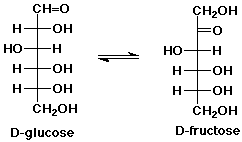1. (20 points) Write a complete name for each of the following compounds, including designation of stereochemistry if it is specifically shown:
a) 
b) 
c) 
d) 
2. (25 points) Write all the reasonable resonance forms for the ionic compounds that would be formed in each of the following acid-base reactions. Circle the one (or ones) that are likely to be the major contributors.
a) 
b) 
c) 
d) 
e) ![]()
3. (15 points) Complete each of the following reactions by adding the missing part: either the starting compound, the necessary reagents and conditions, or the final major product. Indicate stereochemistry if it is specific.
a) ![]()
b) 
c) ![]()
d) 
e) 
4. (15 points) Complete each of the following reactions by adding the missing part: either the starting compound, the necessary reagents and conditions, or the final major product. Indicate stereochemistry if it is specific.
a) 
b) 
c) 
d) 
e) 
5. (15 points) Arrange the following in order by indicating "MOST" and "LEAST" under the compounds that are the most and least reactive or have the highest and lowest values of that property.
a) basicity

b) acidity
![]()
c) acidity

d) acidity

e) reactivity towards water
![]()
6. (10 points) Write a balanced reaction for the oxidation of hydroquinone by molecular oxygen.
![]()
The actual oxidation in biological systems could involve loss of one electron at a time or two electrons (with corresponding losses of H+ as necessary). Draw the expected intermediates from one-electron oxidation or two-electron oxidation.
7. (10 points) Write a complete mechanism for the base-catalyzed hydrolysis of benzamide. Show all steps.
8. (15 points) Write a complete mechanism for the acid-catalyzed addition of methanol to cyclopentanone to form 1,1-dimethoxycyclopentane. Show all steps and show all resonance forms for any intermediates involved.
9. (15 points) Write a complete mechanism for the Claisen
condensation shown below. Show all steps and show all resonance
forms for any intermediates involved.

10. (15 points) Identify the unknown compound that gives the following spectral data. Indicate the assignments for each of the spectral data given.
Mass Spec:
parent molecular ion at 134
other peaks at m/z = 105 , 91
IR:
strong peak at ~ 1700 cm-1
1H NMR:
2.3 ppm, 3H, singlet
2.8 ppm, 2 H, doublet
7.5 ppm, 4 H, doublet of doublets
9.8 ppm, 1H, triplet
11. (15 points) Illustrate how the malonic ester synthesis
would be used to prepare the compound shown below.

12. (15 points) Write out a sequence of reactions that could be used to accomplish one of the following conversions. Show the necessary reagents and conditions for each reaction step, but do not show mechanisms. As starting materials you may use acetylene, any alcohol that has four carbons or fewer, plus any needed solvents or inorganic reagents. JUST DO ONE OF THE TWO.
13. (15 points) Glucose can be converted to fructose via a common enol. Write the structure of the enol and two different enolate anions.
